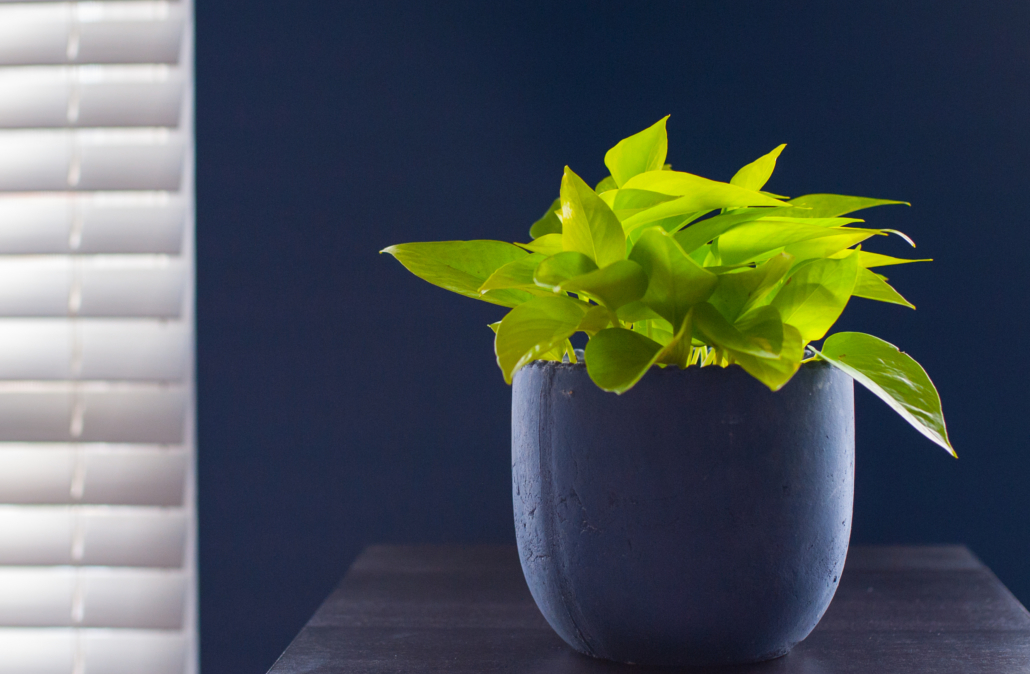
Pothos Care Guide
Pothos plants, native to Southeast Asia, are some of the easiest plants to grow as they are low-maintenance, resilient and durable, tolerating just about any condition from poorly lit office cubicles, to crammed corners in dorm rooms or bright windows in apartment buildings. These are truly beginner friendly plants. Pothos can vine down bookcases and fireplace mantles or drape over hanging baskets attached to the ceiling. Quick growing and reliable, pothos plants can live up to ten years and even longer in optimal growing conditions.
While these plants are easy for anyone to grow, regardless of their experience level or tendency to neglect their plants, you will find them growing best if you follow our guide to keeping these plants thriving and healthy. Read on for tips about watering, light, repotting and more.
Watering
Pothos typically only need to be watered once every one to two weeks. If your plant is in bright light, it may need to be watered more than that, but usually, these plants don’t need too much water in order to thrive and survive. A good rule of thumb is to let the top inch of soil dry out before you water again. You can see how dry the soil is by sticking your finger in the soil. If the top inch feels dry, it’s time to give your pothos a drink. If the soil still feels wet, wait a couple of days before watering the plant. The most common problem with pothos is overwatering. Your pothos will enjoy a pot with drainage holes so that it won’t sit in water. You can place a saucer underneath the pot to catch extra water that drains from the pot.
Sunlight
Pothos plants do not require an abundance of sunlight and can survive in low light conditions, such as in offices and dorm rooms. They will, however, grow best in bright, indirect sunlight. In low light conditions, you will find that your plant grows much more slowly. The brighter the light, the faster the growth rate, but if you place the plant in intense direct sunlight, this will cause the leaves to burn. It will also be happiest in average room temperature, from 60 to 80 degrees, placed away from air conditioners or heaters in the home.
Soil & Fertilizing
These tough houseplants enjoy moist, but well-drained soil. Pothos are not heavy feeders, but will benefit from monthly fertilization from spring to summer with Schultz All Purpose Fertilizer. As the plant’s growth slows in the winter, it will need less water and food, so there is no need to fertilize during the colder months.
Repotting
Pothos plants will do just fine in a variety of containers, including ceramic, metal, terracotta and plastic vessels. The pot should only be two inches wider than the plant’s root ball and should have drainage holes so that the plant does not end up sitting in water, putting the plant at risk of root rot. Eventually, the plant will become pot-bound and the leaves will start to droop no matter how much you water them, indicating that it might be time to repot your plant to a bigger pot with fresh soil. Look for pots that are at most two inches larger than the current pot and add new soil to reinvigorate the pothos. It is best to repot during spring or summer when the plant is in active growth.
Propagation
These houseplants are easy to propagate. In order to grow your pothos from a cutting, first use a sterile, sharp cutting tool like floral clippers, scissors or knives and choose a healthy looking stem with at least three leaves on it. Cut the clipping at a 45 degree angle a little bit below the lowest leaf node. Fill a small jar of water and place your clipping in it, not letting the leaves touch the water, just the cut stem. Change the water every few days and wait to see the roots emerge in a few weeks. Once you see a few roots growing off the cut stem, you can transport the cutting to a small pot with soil and drainage holes. Move your potted cutting to a spot with bright, indirect light and keep the soil moist but not too wet.
Pests
Pothos are rarely affected by pests and diseases, but may occasionally become infested with mealybugs, a common houseplant pest. If you see these bugs on the leaves and stems of your plant, you can dab the pests away with a cotton swab with rubbing alcohol. Neem oil and insecticidal soap can also be used to control the infestation of mealybugs. If you are not sure what issue is impacting your plant, we recommend bringing a small sample in a plastic bag to the plant clinic at our store for identification. You can also bring us a clear photo of the plant, showing the issue in detail, though we may not always be able to identify the problem from a photo alone.
Troubleshooting
Brown or Yellow Leaves
If your plant’s older leaves are brown or yellow with its new leaves looking healthy, this may mean that you are underwatering your pothos. In this case, you should cut off the browning or yellow leaves to the plant’s base, which will encourage new growth.
Blackened Leaves and Stems
If you see that your plant’s leaves and stems are turning black at a sudden and intense rate, this means that you have overwatered your plant and that it now has root rot. When you see this happening, make sure to cut the affected foliage back and allow the plant’s soil to completely dry out before watering it again. Blackened leaves can also suggest that your plant is too cold. Move the pothos to a warmer area of the home if this is the case.



 Photo by Bryn Wallace
Photo by Bryn Wallace